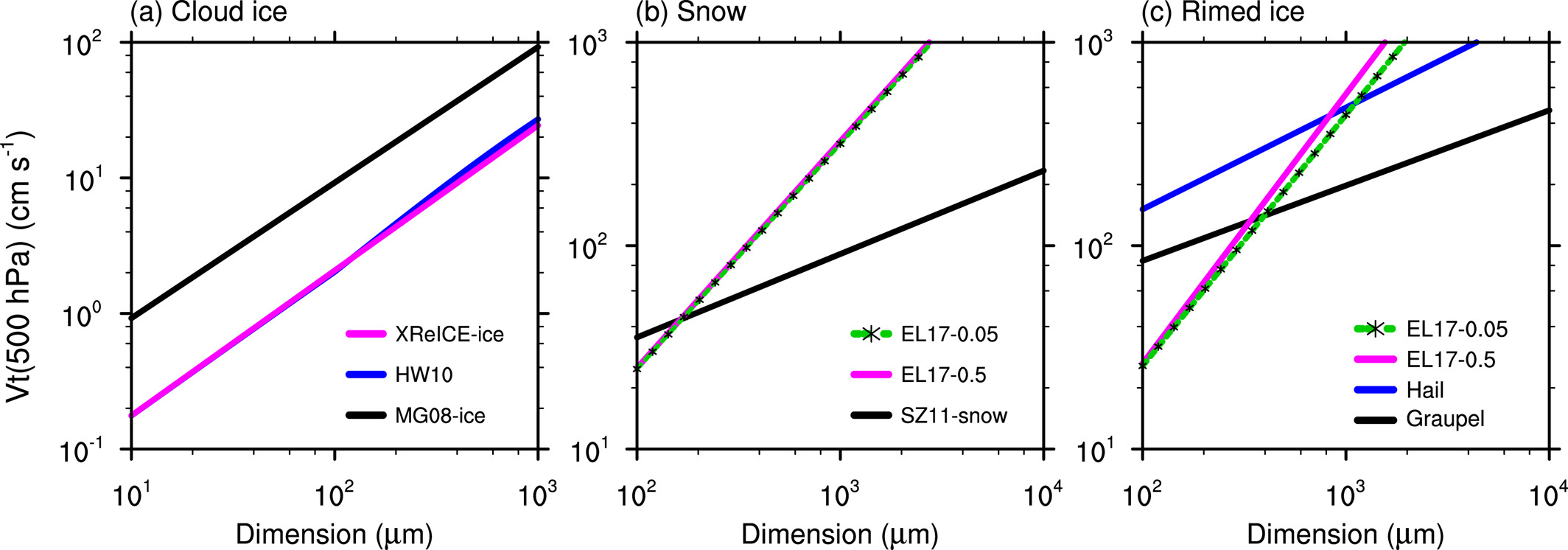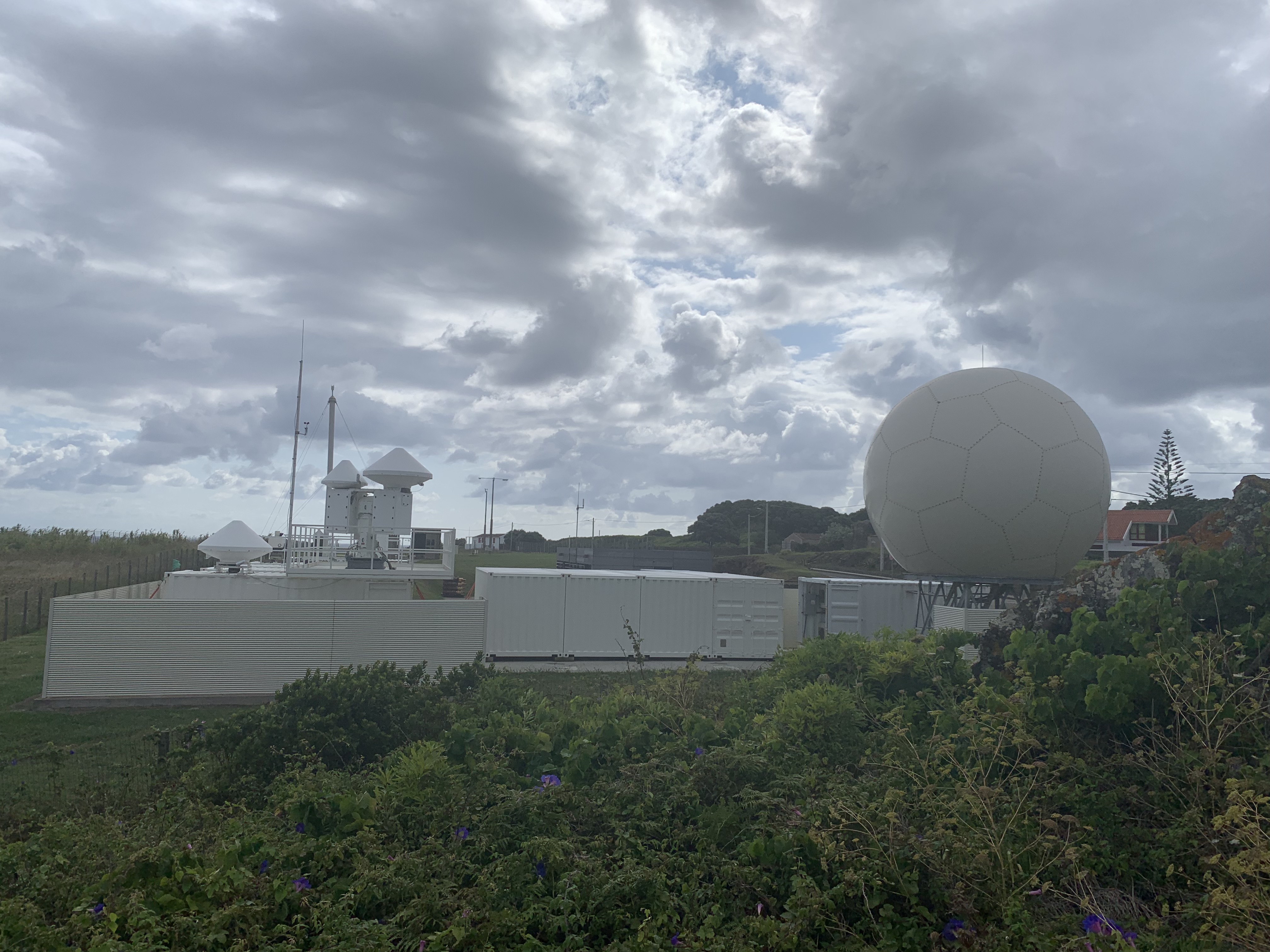UEC Profile: Yunpeng Shan Counts His Lucky Stars
Published: 26 October 2023
Postdoctoral researcher finds pleasure in being an atmospheric model craftsman
Editor’s note: This is the fifth article in the 2023–2024 series of profiles on members of the ARM User Executive Committee (UEC).

For Yunpeng Shan, work is joy. “I am lucky,” he says, “because my hobby is my job.”
That is the goal for so many of us, and Shan has already achieved this early in his career.
Shan works as a postdoctoral research associate for Pacific Northwest National Laboratory (PNNL) in Washington state. He studies the interactions between aerosols (fine atmospheric particles), clouds, and precipitation.
In January 2023, Shan began a four-year stint on the User Executive Committee (UEC) of the Atmospheric Radiation Measurement (ARM) user facility. The UEC represents ARM users in its interactions with facility management.
Shan is the UEC’s science theme representative for cloud and global-scale modeling. He enjoys developing cloud and aerosol parameterization schemes—simplified representations of complex processes—for atmospheric models to help improve weather forecasts, air quality predictions, and renewable energy assessments.
He is also a modeler for the Energy Exascale Earth System Model (E3SM) project, supported by the U.S. Department of Energy (DOE). E3SM is a modeling, simulation, and prediction project that uses DOE laboratory resources to understand and study the Earth.
Life in China
Shan grew up in a rural area of Tianjin Municipality in northern China. His hometown of Cuihuangkou, renowned for producing blankets, saw frequent haze and dust storms. He does not remember a time when he wasn’t aware of air pollution, which was very heavy in China when he was a child. Shan credits the Chinese government for mitigating air pollution well in recent years.

Early on, Shan demonstrated an aptitude for math. When he was an elementary student, he went to the market with his mother to shop for vegetables and meat. When it came time to pay for the groceries, Shan calculated the correct cost in his head before the shop clerk could with the cash register, leaving his mother and the cashier impressed.
At age 16, Shan left home for a senior middle school (the Chinese equivalent of high school) in another rural area of Tianjin. Teachers funneled students into one of two science groups: the natural sciences or the social sciences. Shan was placed in the natural sciences group, which focused on physics, chemistry, and biology, because he enjoyed calculations and excelled at math and science.
After graduating, Shan enrolled in Nanjing University of Information Science and Technology, which is well known for its meteorology and atmospheric science programs. He was excited to study atmospheric science, but when he arrived at the school 1,000 kilometers (about 620 miles) away from home, he was assigned to the geophysics information systems program, a subject that failed to capture his interest.
Fortunately, after his first year, he was able to move into atmospheric science. This program, which allowed him to further develop his talent for theoretical mathematics and physics, was an excellent fit for Shan. He earned his bachelor’s and master’s degrees from Nanjing.
Journey to the States
While pursuing his master’s degree, Shan conducted an air quality forecast system for the 2014 Summer Youth Olympic Games in Nanjing. Industry, a major sector in Nanjing’s economy, contributed to poor air quality in the area. Shan’s air quality forecast system allowed the event coordinators to strategically schedule events during periods of optimal air quality.
With his degrees in hand, Shan received several job offers from institutes in China that were keen on developing their own air quality forecast systems. But the idea of studying abroad intrigued him throughout his education, and that curiosity hadn’t disappeared.

He accepted an offer from the atmospheric sciences program at the University of Nevada, Reno, and moved to the United States in 2014. After earning his doctorate in 2018, Shan accepted a postdoctoral position at the University of Wyoming.
During his year and a half at Wyoming, Shan began to focus on the development of earth system models, which simulate the integration of our planet’s physical, chemical, and biological processes. He was offered this opportunity to make the most of his knowledge of aerosols and cloud physics by professor Xiaohong Liu, a fellow Nanjing University alum. Liu, a highly cited cloud and aerosol scientist who once served on ARM’s UEC, is now the Reta A. Haynes Chair in Geosciences at Texas A&M University.
Shan’s next stop was Brookhaven National Laboratory on Long Island, New York, for another postdoctoral role. At Brookhaven, he worked on a renewable energy forecasting project. An accurate forecast of wind and solar irradiance plays a pivotal role in renewable energy generation.
After two years at Brookhaven, Shan joined PNNL in the summer of 2021. He works remotely from College Station, Texas, where his wife, Lin Lin, is studying for her doctorate in atmospheric science at Texas A&M.
Making Model Strides
Shan is the lead author of five peer-reviewed papers and a co-author of about 30. One of them was recognized as a top-cited paper in Earth’s Future, “Future Drought in the Dry Lands of Asia Under the 1.5 and 2.0 °C Warming Scenarios.”
Shan’s main focus is developing parameterization schemes for atmospheric models. ARM’s 2021 annual report highlighted work by Shan, Lin, and others with support from DOE’s Atmospheric System Research (ASR) and Climate Model Development and Validation (CMDV) programs. Shan and Lin’s collaborative efforts improved the convective ice microphysics parameterization in the National Center for Atmospheric Research’s Community Earth System Model (CESM).

“My wife is engaged in the same research domain as me, making her both my colleague and invaluable partner,” says Shan. “I am truly grateful for her unwavering support.”
Shan also improved the aerosol wet removal parameterization scheme for E3SM and CESM. Both models officially adopted Shan’s scheme because it improved simulations of aerosol distribution, especially vertical ones.
Earth system models face challenges in accurately reproducing the rising global temperature trend that began with the Industrial Revolution. These issues are mainly due to the lack of reliable representation of cloud and aerosol effects on the Earth’s energy balance.
Version 2 of E3SM, with its high aerosol sensitivity, had trouble reproducing the surface temperature warming trend during the second half of the 20th century. Shan’s aerosol wet removal scheme effectively addressed this issue and helped the model better simulate the warming.
“My goal is to make atmospheric models more reliable, more applicable, and more accurate.”
Yunpeng Shan
Version 3 of E3SM, with an upgraded reproduction of Earth’s warming climate, is expected to be released in November 2023. Shan’s aerosol wet removal scheme, featured in this version, is his favorite work to date.
Despite all of his work, Shan does not consider himself an atmospheric model scientist. He prefers to think of himself as an atmospheric model craftsman, tinkering with tools and focusing on details to improve models. Craftspeople understand processes, analyze components, and anticipate problems.
Speaking like a true craftsman, Shan says, “My goal is to make atmospheric models more reliable, more applicable, and more accurate.” He delights in seeing models improve and is encouraged when the effort he and his team put into a challenge pays off.
ARM Ties

Shan was introduced to ARM, a DOE Office of Science user facility, when he started using its data at Brookhaven to evaluate the performance of his renewable energy model.
“Model developments cannot work without observational data,” he says, “and ARM is a very good source to archive this data.”
In joining ARM’s UEC, Shan hopes to help bridge the gap between modelers and the researchers taking the measurements.
“ARM can provide the basis on which we can develop models,” he says.
Shan is a member of a UEC subgroup, led by PNNL colleague and E3SM deputy group lead Susannah Burrows, which focuses on enhancing communication with the modeling/E3SM community.
ARM data are important in “quantitatively characterizing atmospheric processes, understanding fundamental mechanisms governing these processes, and facilitating solutions to parameterization challenges,” says Shan.
Currently, he is using data from ARM’s Eastern North Atlantic and Southern Great Plains atmospheric observatories to improve E3SM’s cloud and aerosol parameterizations. This work is contributing to E3SM and DOE’s Enabling Aerosol-cloud interactions at GLobal convection-permitting scalES (EAGLES) project.
Although his focus is on modeling, Shan would jump at the chance to be a part of a field campaign.
Shan has found the best way to do great work is to love what he does. Fortunately for the future of earth system models, he is eager to pour even more time and passion into his craft.
Keep up with the Atmospheric Observer
Updates on ARM news, events, and opportunities delivered to your inbox
ARM User Profile
ARM welcomes users from all institutions and nations. A free ARM user account is needed to access ARM data.


















